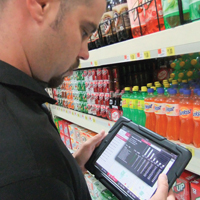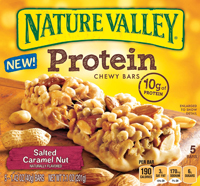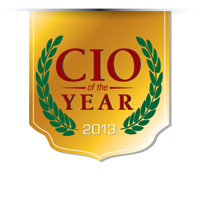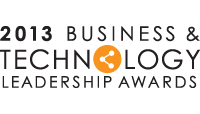2013 CGT Awards
WINNER
 Ralph Loura, CIO, The Clorox Company
Ralph Loura, CIO, The Clorox CompanyRalph Loura transcends the traditional CIO role. Currently, he is busy tackling “big data” at The Clorox Company through a sophisticated analysis of the organization’s “small data” needs. Supported by a talented team of IT professionals, and in close collaboration with the sales and marketing organization, Loura designed, planned, piloted and is now implementing a “modern system of insight” IT platform.
“Our objective was to streamline how we derive key business insights, and avoid the traditional ‘cube building and reporting’ process before data can be turned into actionable insights,” he explains. “For our customer advisory service needs, we designed our solution to leverage columnar databases and employed new tools for data discovery and visualization.”
Currently, the new model is fully deployed at a major retail partner with plans to deploy at others over the coming year. By being a better partner to its retail customers via improved analytics, insights and reporting, the company will ultimately gain a more refined understanding of consumer needs. In all, this translates into a sustainable and competitive edge for Clorox in the consumer goods industry.
“I’m proud of our accomplishments as a team. Together, we’ve increased overall engagement and a sense of ownership to drive business results,” he says on the project’s progress thus far. “Perhaps Teddy Roosevelt said it best, ‘People don’t care how much you know until they know how much you care.’ This is true for your customers, for your vendor partners and, most importantly, for your team members.”
As a true change agent, Loura also offers tremendous thought leadership to the entire consumer goods community through his active involvement in industry events and research, providing insights about what consumer goods companies are looking for when it come to driving business results in this new world of big data.
FINALISTS
David Giambruno, Former SVP & CIO, Revlon
Not being fearful of change and using chaos as an opportunity, David Giambruno orchestrated an evolutionary overhaul of Revlon’s global IT backbone as a foundation for using information as a competitive advantage. For one, he built what some would call the “Holy Grail” of business insights by universally aligning Revlon Global on an enterprise data warehouse platform (in partnership with Retail Velocity and Microsoft) that manages raw materials all the way to the scan at the register. He has implemented a single Revlon shopper-centric platform that manages from the global level all the way down to local level while reducing complexity, providing actionable insights and improving Revlon’s focus on growth capabilities.
“My first big job was to turn data into information that’s actionable by the business teams,” says Giambruno. “The second big idea is for all Revlon employees to make the systems work for them and not have them work for the systems.”
On a broader level, Giambruno believes that consumer goods CIOs must connect products, customers and clients in entirely new ways.
“Technology exists to bring the customer ‘in’ while bringing the supply chain forward,” he says. “This allows new relationships and awareness with the products connecting with ‘social sentiment’, enabling actionable information for teams across the enterprise. The opportunity for the CIO to affect new operating models has never been greater.”
Tom Miller, CIO, Coca-Cola Refreshments
At 127 years old, The Coca-Cola Company is pursuing its most aggressive, strategic operational change yet, and that’s connecting its franchise system’s vast array of business processes, networks and applications in North America.
Tom Miller is leading the effort, which is aptly named “Coke One”. In short, best practices delivered on a single platform will allow independent bottlers to provide a local experience where it matters while leveraging common technology. In other words, enable the local bottler to continue doing what they do best while leveraging common applications, master data, business performance metrics and controls. Miller is working collaboratively with other bottlers to define and deliver this next generation capability. And that’s just a piece of the transformation that Miller is leading.
“We are moving chunks of processing to the cloud and enabling workflow and employee self-services on mobile,” he says. “We try to stay abreast of the consumer cyber-social behaviors and trends to ensure we remain relevant and drive new value-based relationships.”
Next year, Miller’s goals are centered on driving internal communications and workflow to social and mobile platforms, enabling consumer engagement through brand-valued social connections and touch points, and demonstrating that Coca-Cola can indeed operate on a common IT platform across bottlers.
Filippo Passerini, Group President, Global Business Services, CIO, P&G
Under Filippo Passerini’s leadership, P&G’s Global Business Services created a progressive business model.
“One of our biggest challenges is to continue re-inventing the way we do business and increasing the value we bring to the business, while reducing costs,” says Passerini.
These days, much of that involves identifying the best processes, often combined with tools from partner organizations, to get the job done better and/or faster. And it involves the employee’s PC… not something they can do without.
So, to positively impact productivity, GBS recently oversaw the creation of AMP IT UP, an ambitious six-week plan to elevate the digital world of 60,000 P&G employees. PC upgrades — like the ability to boot up the PC faster and enjoy 25x more inbox capacity — happened overnight, one location at a time. The AMP IT UP program had measurable goals, literally calculating the anticipated number of hours saved based on the functionality of the technologies being provided.
“Productivity is now considered one of our core strengths at P&G,” says Passerini. “Looking ahead to 2014, we will continue to be laser focused on helping P&G gain a competitive advantage and win with consumers. We must continuously improve the value of our products for consumers. This means we have to ensure we’re working against the company’s highest business priorities.”
Brian Rice, VP & CIO, Kellogg Company
If you ask Brian Rice, there’s never been a more exciting time to be in IT in the consumer goods industry.
Since joining Kellogg in 2009, he and his team have been immersed in the execution of a five-year journey to position the global IT function as a strategic enabler in achieving business objectives.
“Our function — and our industry — are poised at a critical inflection point where we need to rethink how we work, how we think, and most importantly, how we capture, share and use information to drive insights, brand loyalty, new product development, and ultimately, product sales,” explains Rice.
“Long gone is the reactive, transactional nature of our IT business. Today, and moving forward, communication, collaboration, and an uncompromised focus on the consumer, will define our function, and our success,” he adds.
To that end, Kellogg IT recently initiated the delivery of an integrated technology platform that leverages cloud computing to produce a unified consumer database. The latter will provide the ability to segment consumers according to value and interests and deliver a personalized consumer experience.
“Our biggest collective challenge is to stretch ourselves, and the boundaries of our function, to collaborate and partner with our business leaders to not just manage through change but to define it,” concludes Rice.
SMB Market Award
This award is presented to the small to mid-sized consumer goods firm that is best utilizing technology or business initiatives to achieve substantial growth in size and/or revenue.WINNER
TalkingRain

TalkingRain is proof positive that taking a new approach to an established brand is well worth it. Rather than spending resources on developing new trendy beverages, TalkingRain reinvested in its 20-year-old SparklingICE brand just as consumers were looking for a new line of refreshing beverages.
As a result, the company experienced an explosion in sales, increasing branded business revenue 500 percent in two years. The drinks are now the fastest-growing non-alcoholic beverage brand in the United States. New releases, like Cherry Limeade and Strawberry Watermelon, will hit shelves at the beginning of 2014.
“We knew we had to go all in to ensure the success of the product, and so it became the primary marketing focus of the company. And it’s paying off,” says Kevin Klock, chief executive officer, TalkingRain. “Sparkling ICE has re-shaped the way our company operates. We’re consistently meeting consumer demand and have even released a lemonade series earlier this year that has already become the No. 1 shelf-stable lemonade in the country.”
So, what’s the company’s secret to contending with its much larger competitors?
“It’s smart to respect and learn from others in the industry, especially the big guys. But we learned the hard way that there is no one recipe for success. What they did to get where they are didn’t work for us. We created our own road map, stayed true to our brand, and stayed the course. It was filled with temptation and many opportunities that we had to turn away — but it was all for the betterment of the company, and we’re living proof today that it worked.”
FINALISTS
Blue Diamond Growers
During the 2011 crop year, this leading almond brand catapulted to $1 billion in sales. Expanding into the UK and Australia accounted for a 62 percent overall sales increase in international retail products, and its North American Consumer Division experienced more than 47 percent growth with new product launches. In May 2013, the company doubled its capacity by opening the first phase of a new plant in Turlock, Calif. Plans also included expanding research and development capabilities as global demand continues to increase 10 percent annually.
Yasso Frozen Greek Yogurt
Founded by Amanda Klane and Drew Harrington just four years ago, Yasso created the first-ever line of frozen Greek yogurt novelty bars. They are loved by consumers for their great taste, natural ingredients and healthy attributes. The company went from a concept to development to launch in just over two years, and now sells in more than 11,000 stores nationwide. Yasso continues to explore the industry of frozen Greek yogurt, and aims to be the leader in this category through introducing innovative new items.
Customer Management Award
This award is presented to the consumer goods firm that is best leveraging technology or business process change to manage customer relationships, trade promotions, marketing and/or consumer insights.WINNER
Dr Pepper Snapple Group
 DPSG transformed its mobile sales force from order takers to consultative sales professionals by deploying a suite of tools called MyDPS.
DPSG transformed its mobile sales force from order takers to consultative sales professionals by deploying a suite of tools called MyDPS.“It started with DPS IT changing the way it operated. Instead of the sales force coming with a demand, we went out into the sales force, observed their operation and identified possibilities. This, followed by experimentation with multiple technologies, resulted in MyDPS,” says Nitin Bindal, director of Mobility and Integration, DPSG.
Today, MyDPS consists of: MyDay, an iPad-based mobile sales application built upon Apacheta’s RouteACE platform; MySplashnet, a corporate portal that is the one front door for all commercial and promotional activities; and AMPlify, a visual business intelligence application to measure personal performance and provide SKU-level sales information by customer.
These tools build a customer-selling story with real-time information. Sales collateral that is relevant for the customer with which they are interacting is available at their fingertips. Actionable analytics are relevant for the territory and for the customers with which they are engaging. Sales managers no longer have to thumb through binders for sales collateral and customer sales data, and can engage customers with visually exciting materials. What’s more, promotional information is entered into a single portal, which distributes relevant promotions to the field sales person’s iPad.
In all, MyDPS helps sales teams to be their most efficient, carrying a single device that has all the content they need.
According to Tom Farrah, CIO for DPSG, “We have many different routes to market and our going forward plan is to leverage MyDPS platform to bring its capabilities to each of the diverse channels. We want to align this technology to our ultimate goal, which is to grow sales for DPSG and our customers.”
FINALISTS
Conair Corporation
Conair receives a constant stream of downstream data from retail customers and market research partners. Under an agreed upon cross-functional partnership, IT partnered with the company’s consumer insights and category management teams to drive sales based on in-depth reports for more than 50 categories, using Orchestro as its database provider. The official project kicked off in December of 2011, and by September 2012, Conair found a 93 percent improvement in productivity.
Ferrero
This global chocolate and confectionery producer is a company that takes risks. Actively using technology to transform its business, the company has an extensive SAP footprint and is currently leveraging mobility in innovative ways to transform its business processes. For example, Ferrero implemented a mobile platform and device management application as the foundation of its mobility strategy. Applications, including salesforce automation for retail execution, business intelligence and productivity applications, continue to be added on top of the platform to transform the business.
Dick Clark Supply Chain Award
Named in honor of the late supply chain visionary, this award recognizes a consumer goods firm for excellence in executing improvements in supply or demand planning, warehouse management, transportation management, S&OP processes or supply chain network design.WINNER
Crocs, Inc.
 Over the course of 2012, Crocs sold nearly 50 million units in more than 90 countries through wholesale, retail and Internet channels. Effective global supply chain management has been integral to the company’s continued growth and ability to meet rising consumer demand. Strategic initiatives include:
Over the course of 2012, Crocs sold nearly 50 million units in more than 90 countries through wholesale, retail and Internet channels. Effective global supply chain management has been integral to the company’s continued growth and ability to meet rising consumer demand. Strategic initiatives include:- Streamlined Distribution Centers: In an effort to manage distribution center efficiencies and increase production timelines, Crocs shifted relevant responsibilities, such as value-added packaging and markings on footwear, from distribution centers to manufacturing locations in 2012. These changes have resulted in 8 percent to 10 percent total product cost savings.
- Management of Excess Inventory: Crocs emphasizes getting a read on consumer product receptivity early and frequently, both in stores and online. This allows the company to more accurately meet consumer demand by manufacturing additional popular items and scaling back on production of items that are selling more slowly, greatly reducing its inventory levels.
- Reducing Concentration of Manufacturing Facilities: During the past 12 months, Crocs has undertaken an effort to reduce the concentration of manufacturing facilities in any single country. As the company experiences growth in certain markets, it has become increasingly important to ensure alignment between countries where products are sourced and where products are sold — as well as remain as cost-efficient as possible.
- ERP Implementation: In an effort to address the brand’s growth goals and stakeholder demands, Crocs took the bold step to implement SAP ERP. The program, currently in the initial stages, will impact the global supply change process.
As a result of continued advances in its supply chain, Crocs has been able to successfully support its recent growth and expansion, while remaining flexible to accommodate future projects and business needs.
FINALISTS
The Clorox Company
Clorox is making the next generation of supply chain collaboration — one focused on shared warehousing and transportation capacity — a reality. With a team of resources dedicated to its cross-shipper collaboration efforts, Clorox is actively seeking partners using data-driven analyses to identify actionable opportunities. Furthermore, Clorox is working to understand how collaborative shipping or distribution could affect the best place to put a distribution center. Collaboration benefits for Clorox and shippers include improved strategic alignment with retailers; maintained or improved in-stock position; top-line growth; improved logistics expense; and sustainability gains.
Shell
With brands such as Pennzoil, Quaker State and Rimula, Shell offers finished goods to consumers in more than 150 countries. During its eight-year journey toward supply chain excellence, Shell was the first oil and gas company to recognize that it could create daily forecasts that reflect current market conditions by using demand signals from across the supply chain. To take performance to the next level, Shell deployed Terra Technology’s Demand Sensing and Multi-Enterprise Inventory Optimization. As the next important step, Shell is enhancing its use of Terra’s analytics to fundamentally shift the S&OP process from balancing volume to balancing value. “We are honored to be recognized by CGT for our efforts to build a world-class supply chain,” says Nick Lynch, global planning excellence manager at Shell.
Most Innovative Product Award
This award honors the consumer goods industry’s most innovative new product launched in 2012/2013.WINNER
 Nature Valley Protein Bars / General Mills
Nature Valley Protein Bars / General MillsIntroduced in January 2012, Nature Valley Protein Bars broke the powerbar mold by featuring ingredients you can see and recognize — like roasted peanuts, almonds or decadent dark chocolate. Each bar has fewer than 200 calories and contains 10 grams of protein and 5 grams of fiber. With first-year dollar sales of more than $100 million, this delicious snack and source of energy was No. 8 on IRI’s 2012 New Product Pacesetters list.
“Nature Valley Protein bars were phenomenally successful in part because they were the first bar offering in the wholesome snack aisle that offered 10 grams of protein and amazing taste and texture, which we felt was missing as an option for consumers,” says Joshua Opiacha, senior principal scientist for General Mills.
Nature Valley Protein Bars are a testament to the long history of successful innovation efforts within General Mills. The company’s Snacks Division was an early pioneer and adopter of open innovation. Additional in-market examples of breakthrough innovation include Nature Valley Sweet and Salty bars, Fiber One chewy bars and Fiber One 90-Calorie Brownies.
“The relentless pursuit of differentiated innovation has strengthened General Mills’ position as a category leader in grain snacks,” closes Opiacha.
FINALISTS
Bengay Zero Degrees / Johnson & Johnson
The first and only topical pain reliever that combines the icy-cold sensation of ice with the long-lasting pain relief of BENGAY medicine. Plus, its innovative marketing campaign completely changed the perception of the BENGAY brand from your grandpa’s solution for pain relief to a cool new product that can proactively enhance movement among a younger generation.
Fit / Popcorn, Indiana
FIT is a new line of better-for-you popcorn that is ideal for those who are looking to snack smarter (not just skinnier). Its four mouth-watering flavors — Sea Salt, Parmesan & Herb, Extra Virgin Olive Oil and Onion Dijon — haven’t been done this well elsewhere. FIT Real Butter was added in March 2013, and two months later, the company hit the road with former contestants of “The Biggest Loser” to change the way Americans snack, one kernel at a time.
Finish Quantum with Power Gel / Reckitt Benckiser
Serving consumer interest, the Finish brand sought to develop a dishwasher detergent that would combine the cleaning agents consumers have trusted for years — powders and gels — into a single dose. Reckitt Benckiser’s R&D team succeeded when it created Finish Quantum with Power Gel, which contains active ingredients separated into three chambers that work together during the wash cycle for ultimate results.
Luci / MPOWERD Inc.
Luci is a low cost, long-lasting, durable, solar powered lighting solution. Launched in October 2013, it quickly gained a strong reputation as the solution where light is inaccessible or unaffordable. Unlike other solar power products, Luci incorporates the functions of a task light, flashlight and diffused lantern. Once Luci is acquired, there are no further costs associated with lighting.
Most Innovative Company Award
This award honors the consumer goods company that has continually driven growth through product and/or process innovation in 2012/2013.WINNER
 Crocs, Inc.
Crocs, Inc.Soon after Crocs’ “love ‘em or hate ‘em” clogs were launched in 2002, the company became a Wall Street darling when it debuted with the biggest footwear IPO in history in 2006. By 2009, the brand was flirting with penny-stock territory. Fast forward to 2012 and not only had Crocs successfully executed a major turnaround initiative, it had achieved the $1 billion revenue milestone in 2011, and did it faster than Nike. The company’s successful focus on innovation is evident not only in the number of new styles introduced during the past several years, but also in the popularity of those new styles.
Today, the clog silhouette accounts for less than half of Crocs’ global footwear sales. The past 12 months have marked Crocs’ most substantial new product growth to-date, including further diversifying product offerings to reach new audiences and markets. Crocs has also focused on strategically diversifying its products to help consumers better recognize Crocs as a true lifestyle brand with styles for all wearing occasions. The women’s Equestrian Suede Tall Boot and Berryessa Hiker Boot along with the Crocs Golf by Hank Haney lines were successful in helping consumers recognize the breadth of Crocs’ product offerings, while driving sales of styles with higher average selling prices.
Crocs also recognizes the need to innovate when it comes to marketing its growing number of styles to consumers. This led the company to rethink its approach to its online channel and eventually launch an updated, cutting-edge e-commerce site in early 2013. And, by providing iPads in stores, customers could pick out a style and size that was not currently available at their location and have it shipped directly to their home. From the launch of the program in January of 2013 to June 2013, Crocs garnered more than $750,000 in sales on its in-store iPad system.
FINALISTS
Big Ass Fans
Big Ass Fans successfully traversed from farms, factories and offices into living rooms in just over a decade. With its minimalist design, premium materials, unparalleled efficiency and precision hand balancing, its Haiku residential ceiling fan quickly earned 11 international design awards and ENERGY STAR’s top ranking.
The Campbell Soup Company
Consumer-driven innovation was designated as a top priority in 2011. Over the next two years, the company introduced 100 new products in the United States, and is now launching more than 200 new products in fiscal 2014, like Goldfish Puffs, cheesy air-puffed baked snacks, and Pepperidge Farm Goldfish Mac & Cheese, the brand’s first entry in the simple meals category.
CleanWell Company
CleanWell Company disrupted the household cleaning category with an antibacterial disinfectant formula based on natural thyme oil that shocked chemists with its efficacy when it was first evaluated. This innovative product line is poised to change the way Americans achieve “really clean” much for the better.
Mars Chocolate North America
This industry-leading confectionery company strives to deliver innovative new products, unique consumer promotions and effective sales tools to help retailers drive profit. Its M&M’S Brand Snack Mix took home the 2013 Product of the Year Award by Product of the Year USA. Other new items include SNICKERS and MILKY WAY Bites, M&M’S Chocolate Bar and COMBOS Baked Snacks 7 Layer Dip Tortilla.



